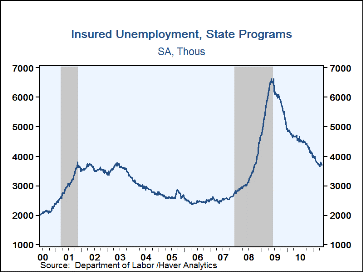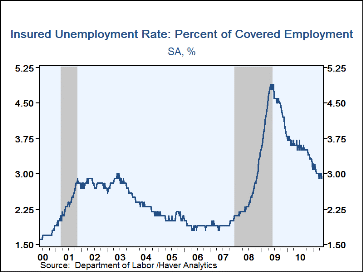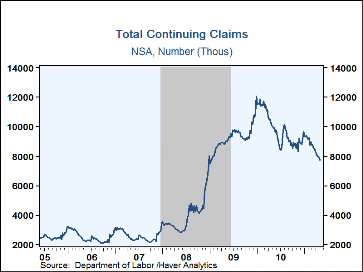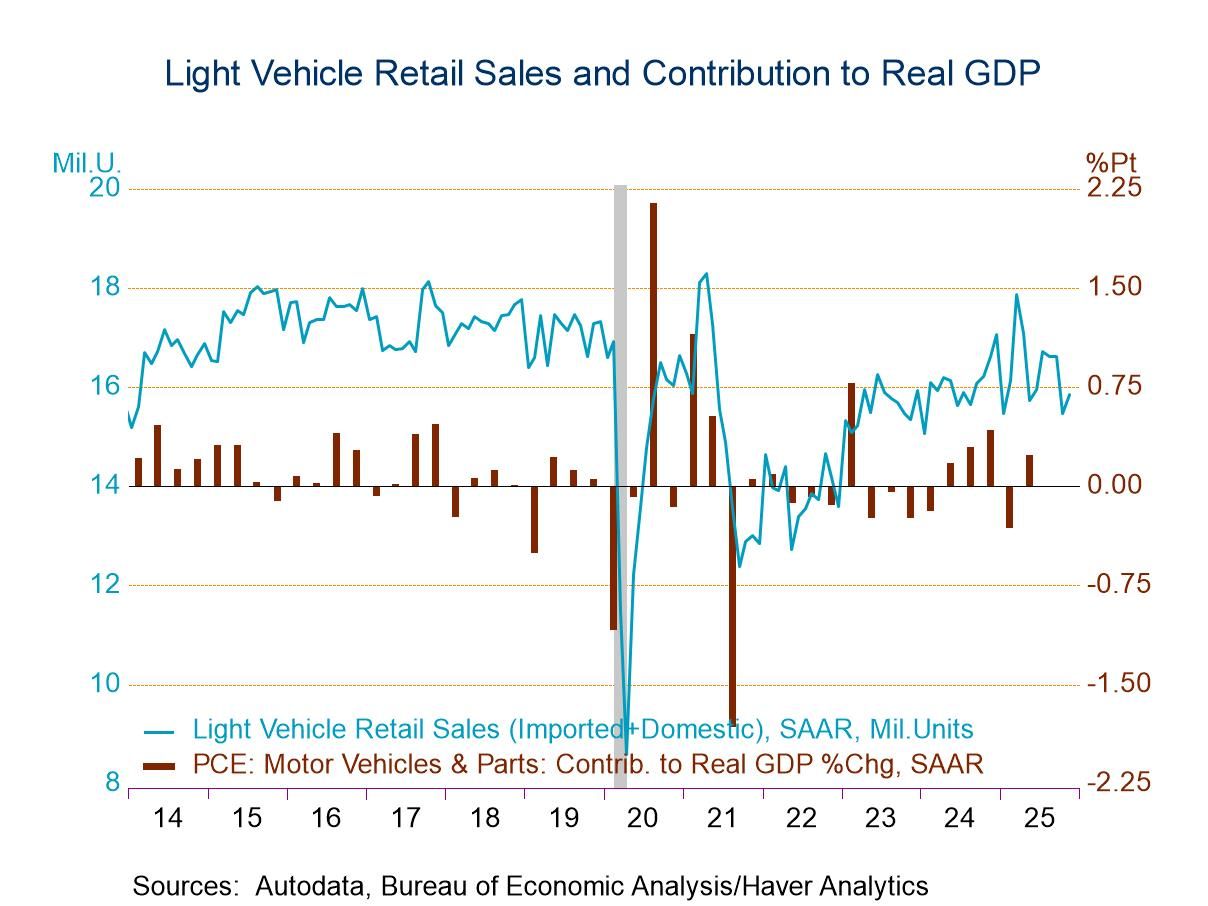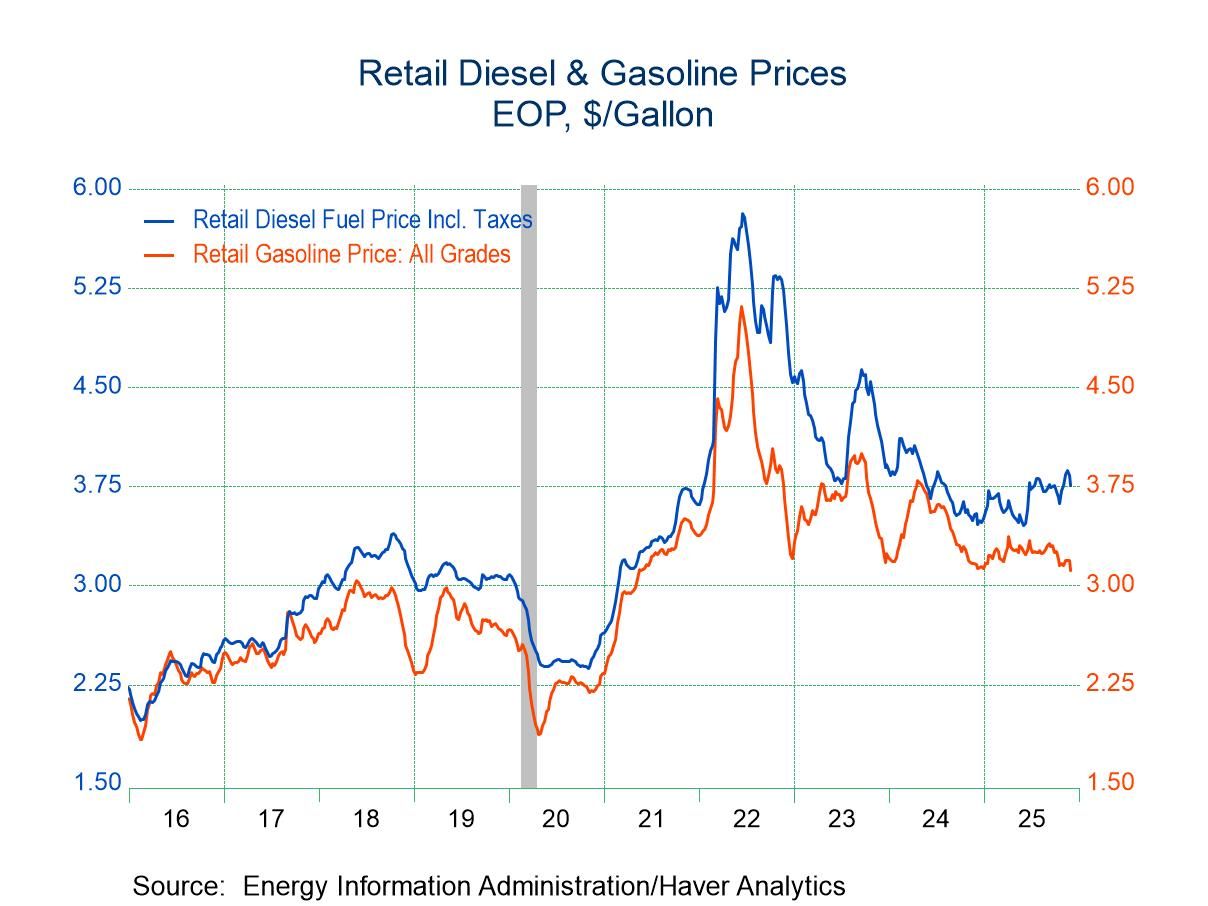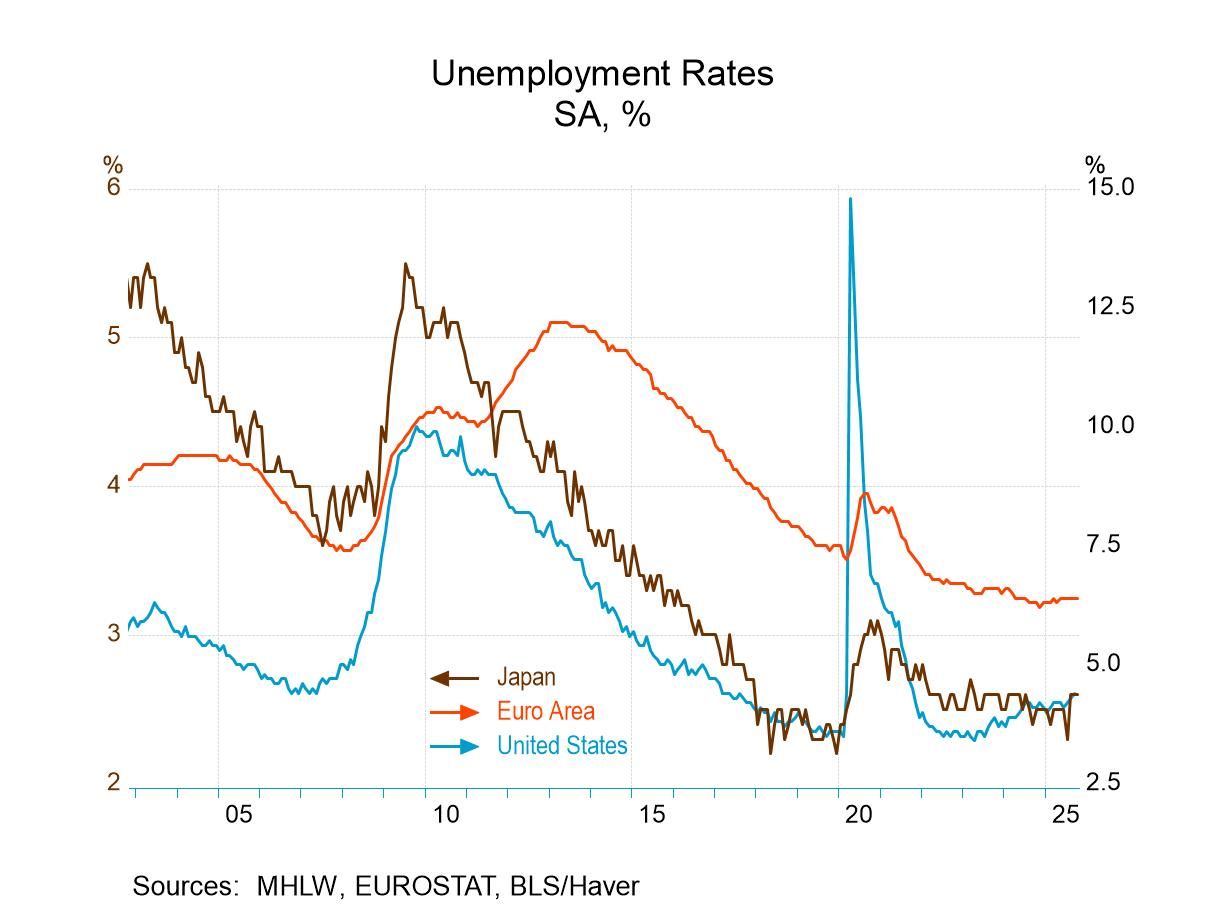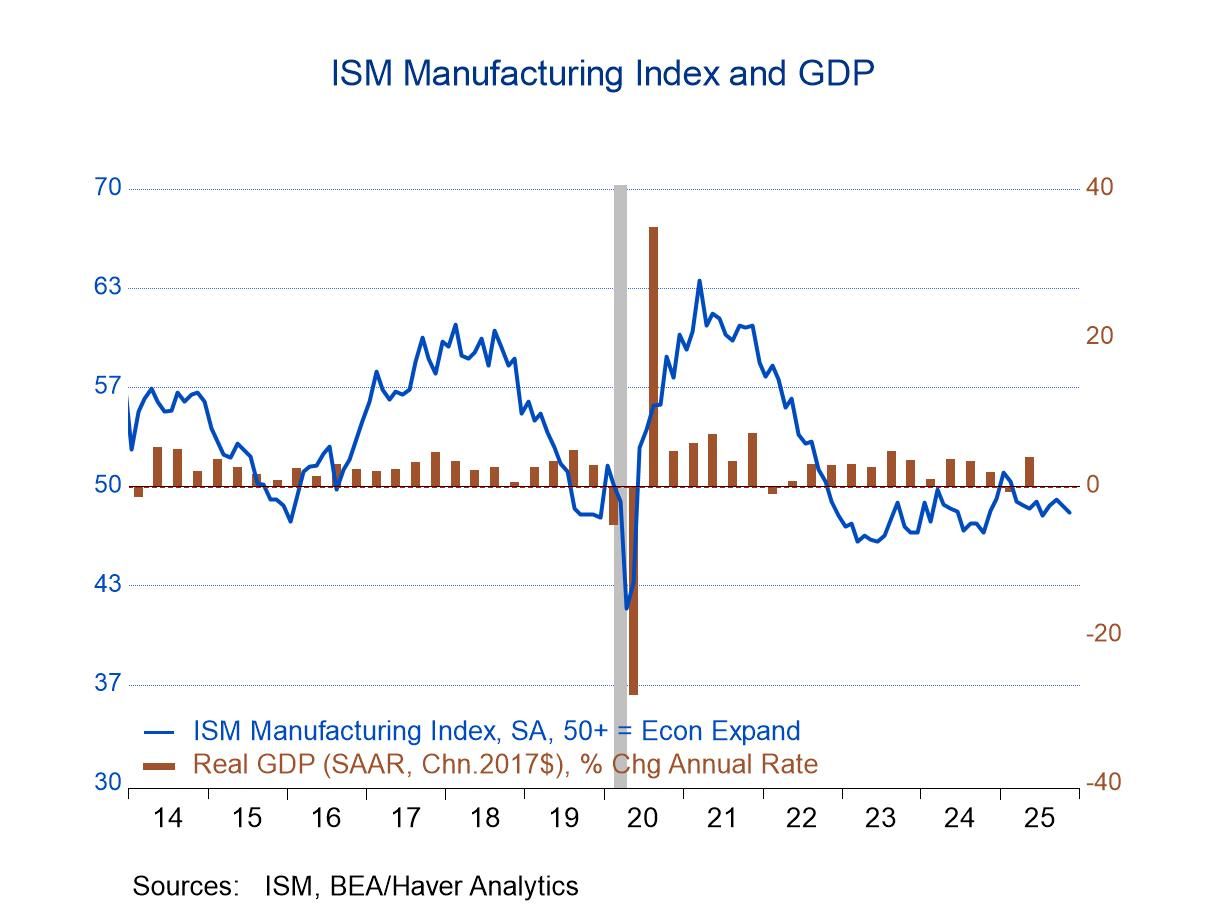 Global| May 26 2011
Global| May 26 2011U.S. Initial Unemployment Insurance Claims Rebound
by:Tom Moeller
|in:Economy in Brief
Summary
Initial claims for jobless insurance rebounded to 424,000 from 414,000 during the week earlier, revised from 409,000. The latest figure was higher than Consensus expectations for 400,000 claims. The four-week moving average of claims [...]
Initial claims for jobless insurance rebounded to 424,000 from 414,000 during the week earlier, revised from 409,000. The latest figure was higher than Consensus expectations for 400,000 claims. The four-week moving average of claims slipped to 438,500. During the last ten years there has been a 77% correlation between the level of claims and the m/m change in nonfarm payrolls.
Continuing claims for unemployment insurance fell to 3.690M and the insured unemployment rate slipped to 2.9%. These claimants, however, were only about half of the total number of people currently receiving unemployment insurance. Regular extended benefits, with eligibility dependent on conditions in individual states, fell to 633,946 during the week ending May 7 (the latest figure available). A companion program, Emergency Unemployment Compensation, referred to as EUC 2008, also saw a 3.412M beneficiaries (-32.5% y/y) in the May 7th week.
A grand total of all claimants for unemployment insurance includes extended and emergency programs and specialized programs covering recently discharged veterans, federal employees and those in state-run "work share" programs. All together, during the April 30th week, these recipients fell to 7.940M, off 22.5% y/y. We calculate a broader insured unemployment rate by taking this grand total as a percent of covered employment. The latest rate slipped to 5.0%. It peaked at 9.3% on January 2, 2010.
Two other programs, disaster unemployment assistance (DUA) and trade readjustment allowance (TRA), are reported through a different Labor Department channel. Claimants were the lowest since June in late December. All of these individual program data are not seasonally adjusted.
Data on weekly unemployment insurance programs are contained in Haver's WEEKLY database, including the seasonal factor series, and they are summarized monthly in USECON. Data for individual states, including the unemployment rates that determine individual state eligibility for the extended benefits programs and specific "tiers" of the emergency program, are in REGIONW, a database of weekly data for states and various regional divisions. Action Economics estimates are in AS1REPNA.
| Unemployment Insurance (000s) | 5/21/11 | 5/14/11 | 5/7/11 | Y/Y % | 2010 | 2009 | 2008 |
|---|---|---|---|---|---|---|---|
| Initial Claims | 424 | 414 | 438 | -9.2 | 459 | 574 | 418 |
| Continuing Claims | -- | 3,690 | 3,736 | -20.5 | 4,544 | 5,807 | 3,338 |
| Insured Unemployment Rate(%) | -- | 2.9 | 3.0 | 3.6 (5/10) |
3.6 | 4.4 | 2.5 |
| Total "All Programs" (NSA)* | -- | -- | 7.740M | -22.5 | 9.850M | 9.163M | 3.903M |
*Excludes disaster unemployment assistance and trade readjustment allowance
Tom Moeller
AuthorMore in Author Profile »Prior to joining Haver Analytics in 2000, Mr. Moeller worked as the Economist at Chancellor Capital Management from 1985 to 1999. There, he developed comprehensive economic forecasts and interpreted economic data for equity and fixed income portfolio managers. Also at Chancellor, Mr. Moeller worked as an equity analyst and was responsible for researching and rating companies in the economically sensitive automobile and housing industries for investment in Chancellor’s equity portfolio. Prior to joining Chancellor, Mr. Moeller was an Economist at Citibank from 1979 to 1984. He also analyzed pricing behavior in the metals industry for the Council on Wage and Price Stability in Washington, D.C. In 1999, Mr. Moeller received the award for most accurate forecast from the Forecasters' Club of New York. From 1990 to 1992 he was President of the New York Association for Business Economists. Mr. Moeller earned an M.B.A. in Finance from Fordham University, where he graduated in 1987. He holds a Bachelor of Arts in Economics from George Washington University.



